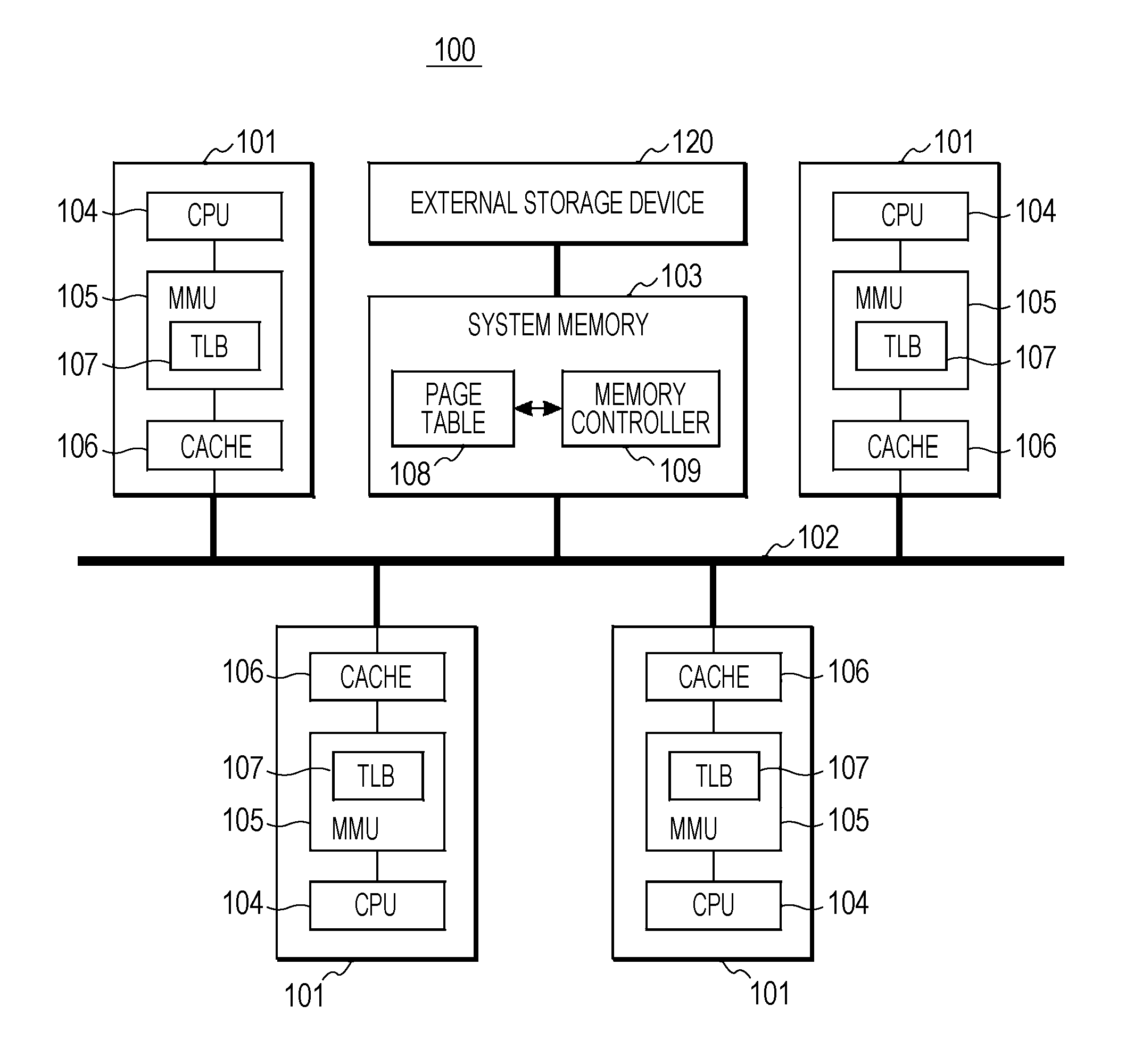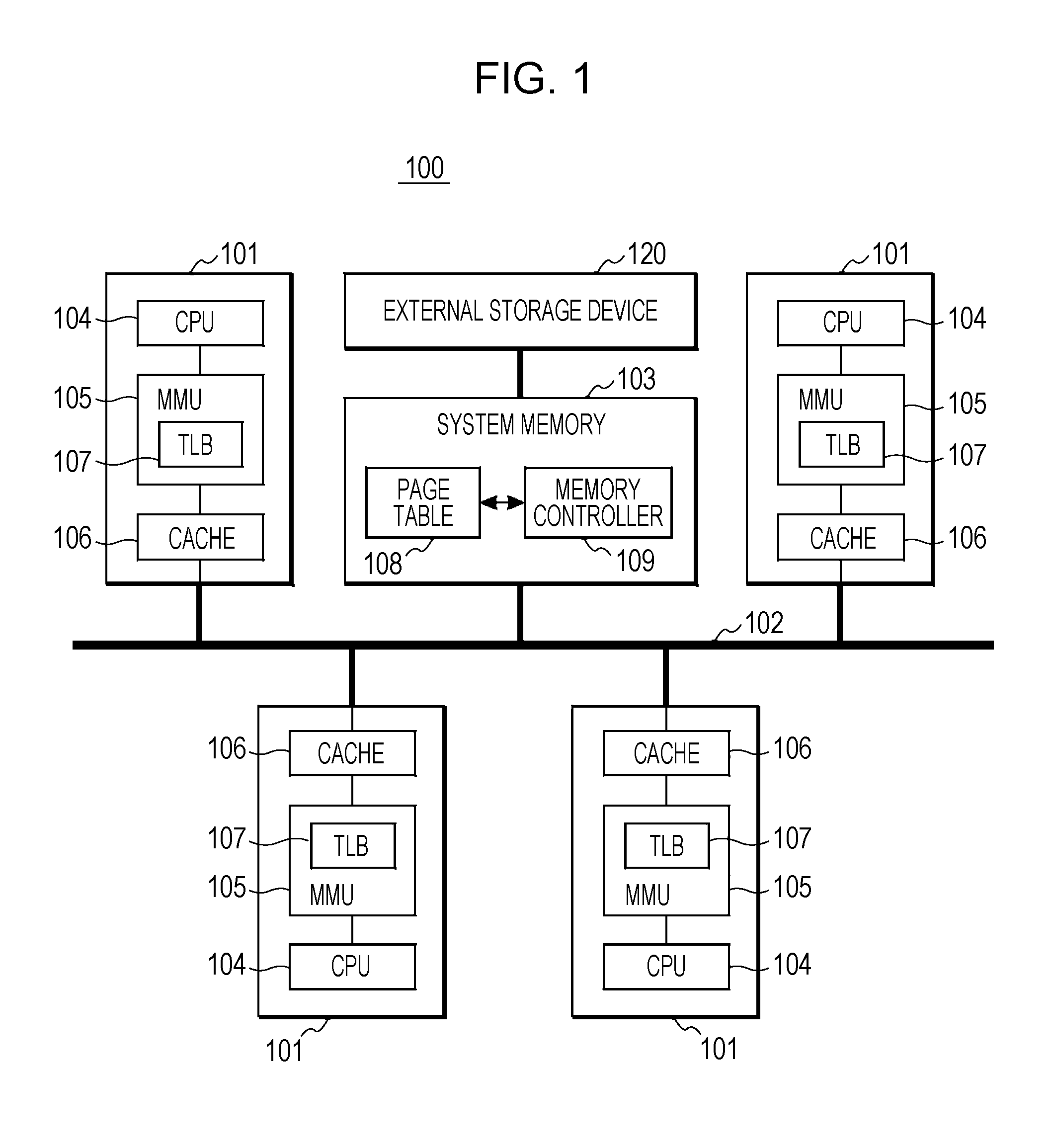Cache coherency control method, system, and program
a shared memory multiprocessor and cache coherency technology, applied in the field of cache coherency control, can solve the problems of inability to carry out processes carried out by the plurality of processors, inability to achieve coherency, and inability to maintain the cache coherency of the memory system, so as to achieve the effect of reducing the cost of hardware and software, increasing the scalability of the shared memory multiprocessor system, and improving the cost performan
- Summary
- Abstract
- Description
- Claims
- Application Information
AI Technical Summary
Benefits of technology
Problems solved by technology
Method used
Image
Examples
Embodiment Construction
[0034]The embodiments below are not intended to limit the scope of claims of the invention, and not all of the combinations of the features described in the embodiments are required for solution to problem. The present invention may be embodied in many different forms and should not be construed as limited to the contents of the embodiments set forth herein. The same portions and elements have the same reference numerals throughout the description of the embodiments.
[0035]FIG. 1 is a block diagram that schematically illustrates a multiprocessor system 100 that can be used in achieving cache coherency control according to the present invention. The multiprocessor system 100 includes a plurality of processors 101, a memory bus 102, and a system memory 103. The processors 101 are connected to the system memory 103 by the memory bus 102. Each of the processors 101 includes a CPU 104, an MMU 105, and a cache 106. The MMU 105 includes a TLB 107. The cache 106 in the processor 101 holds pa...
PUM
 Login to View More
Login to View More Abstract
Description
Claims
Application Information
 Login to View More
Login to View More - R&D
- Intellectual Property
- Life Sciences
- Materials
- Tech Scout
- Unparalleled Data Quality
- Higher Quality Content
- 60% Fewer Hallucinations
Browse by: Latest US Patents, China's latest patents, Technical Efficacy Thesaurus, Application Domain, Technology Topic, Popular Technical Reports.
© 2025 PatSnap. All rights reserved.Legal|Privacy policy|Modern Slavery Act Transparency Statement|Sitemap|About US| Contact US: help@patsnap.com



